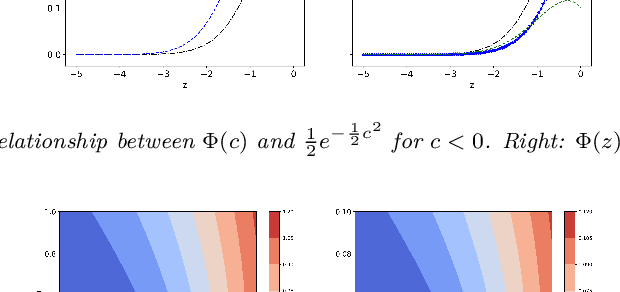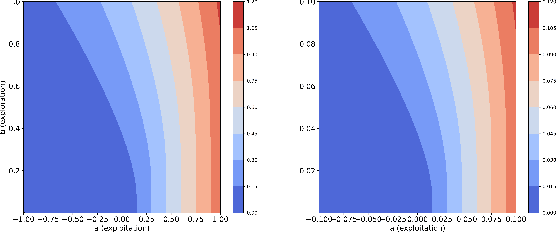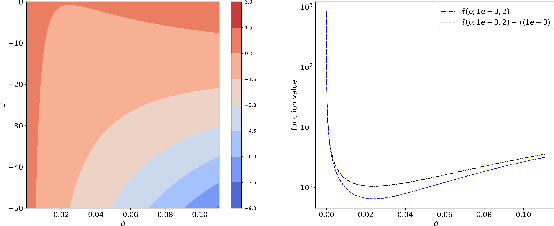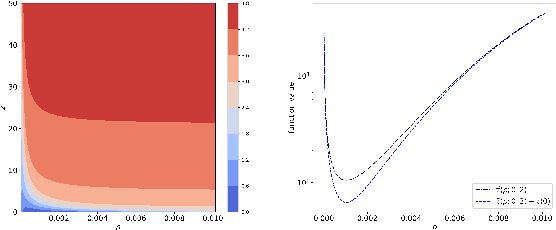Jingyi Wang
An Empirical Study of Sample Selection Strategies for Large Language Model Repair
Oct 23, 2025Abstract:Large language models (LLMs) are increasingly deployed in real-world systems, yet they can produce toxic or biased outputs that undermine safety and trust. Post-hoc model repair provides a practical remedy, but the high cost of parameter updates motivates selective use of repair data. Despite extensive prior work on data selection for model training, it remains unclear which sampling criteria are most effective and efficient when applied specifically to behavioral repair of large generative models. Our study presents a systematic analysis of sample prioritization strategies for LLM repair. We evaluate five representative selection methods, including random sampling, K-Center, gradient-norm-based selection(GraNd), stratified coverage (CCS), and a Semantic-Aware Prioritized Sampling (SAPS) approach we proposed. Repair effectiveness and trade-offs are assessed through toxicity reduction, perplexity on WikiText-2 and LAMBADA, and three composite metrics: the Repair Proximity Score (RPS), the Overall Performance Score (OPS), and the Repair Efficiency Score (RES). Experimental results show that SAPS achieves the best balance between detoxification, utility preservation, and efficiency, delivering comparable or superior repair outcomes with substantially less data. Random sampling remains effective for large or robust models, while high-overhead methods such as CCS and GraNd provide limited benefit. The optimal data proportion depends on model scale and repair method, indicating that sample selection should be regarded as a tunable component of repair pipelines. Overall, these findings establish selection-based repair as an efficient and scalable paradigm for maintaining LLM reliability.
TableEval: A Real-World Benchmark for Complex, Multilingual, and Multi-Structured Table Question Answering
Jun 04, 2025Abstract:LLMs have shown impressive progress in natural language processing. However, they still face significant challenges in TableQA, where real-world complexities such as diverse table structures, multilingual data, and domain-specific reasoning are crucial. Existing TableQA benchmarks are often limited by their focus on simple flat tables and suffer from data leakage. Furthermore, most benchmarks are monolingual and fail to capture the cross-lingual and cross-domain variability in practical applications. To address these limitations, we introduce TableEval, a new benchmark designed to evaluate LLMs on realistic TableQA tasks. Specifically, TableEval includes tables with various structures (such as concise, hierarchical, and nested tables) collected from four domains (including government, finance, academia, and industry reports). Besides, TableEval features cross-lingual scenarios with tables in Simplified Chinese, Traditional Chinese, and English. To minimize the risk of data leakage, we collect all data from recent real-world documents. Considering that existing TableQA metrics fail to capture semantic accuracy, we further propose SEAT, a new evaluation framework that assesses the alignment between model responses and reference answers at the sub-question level. Experimental results have shown that SEAT achieves high agreement with human judgment. Extensive experiments on TableEval reveal critical gaps in the ability of state-of-the-art LLMs to handle these complex, real-world TableQA tasks, offering insights for future improvements. We make our dataset available here: https://github.com/wenge-research/TableEval.
Blind Spot Navigation: Evolutionary Discovery of Sensitive Semantic Concepts for LVLMs
May 21, 2025Abstract:Adversarial attacks aim to generate malicious inputs that mislead deep models, but beyond causing model failure, they cannot provide certain interpretable information such as ``\textit{What content in inputs make models more likely to fail?}'' However, this information is crucial for researchers to specifically improve model robustness. Recent research suggests that models may be particularly sensitive to certain semantics in visual inputs (such as ``wet,'' ``foggy''), making them prone to errors. Inspired by this, in this paper we conducted the first exploration on large vision-language models (LVLMs) and found that LVLMs indeed are susceptible to hallucinations and various errors when facing specific semantic concepts in images. To efficiently search for these sensitive concepts, we integrated large language models (LLMs) and text-to-image (T2I) models to propose a novel semantic evolution framework. Randomly initialized semantic concepts undergo LLM-based crossover and mutation operations to form image descriptions, which are then converted by T2I models into visual inputs for LVLMs. The task-specific performance of LVLMs on each input is quantified as fitness scores for the involved semantics and serves as reward signals to further guide LLMs in exploring concepts that induce LVLMs. Extensive experiments on seven mainstream LVLMs and two multimodal tasks demonstrate the effectiveness of our method. Additionally, we provide interesting findings about the sensitive semantics of LVLMs, aiming to inspire further in-depth research.
Convergence Rates of Constrained Expected Improvement
May 16, 2025Abstract:Constrained Bayesian optimization (CBO) methods have seen significant success in black-box optimization with constraints, and one of the most commonly used CBO methods is the constrained expected improvement (CEI) algorithm. CEI is a natural extension of the expected improvement (EI) when constraints are incorporated. However, the theoretical convergence rate of CEI has not been established. In this work, we study the convergence rate of CEI by analyzing its simple regret upper bound. First, we show that when the objective function $f$ and constraint function $c$ are assumed to each lie in a reproducing kernel Hilbert space (RKHS), CEI achieves the convergence rates of $\mathcal{O} \left(t^{-\frac{1}{2}}\log^{\frac{d+1}{2}}(t) \right) \ \text{and }\ \mathcal{O}\left(t^{\frac{-\nu}{2\nu+d}} \log^{\frac{\nu}{2\nu+d}}(t)\right)$ for the commonly used squared exponential and Mat\'{e}rn kernels, respectively. Second, we show that when $f$ and $c$ are assumed to be sampled from Gaussian processes (GPs), CEI achieves the same convergence rates with a high probability. Numerical experiments are performed to validate the theoretical analysis.
PRUNE: A Patching Based Repair Framework for Certiffable Unlearning of Neural Networks
May 10, 2025Abstract:It is often desirable to remove (a.k.a. unlearn) a speciffc part of the training data from a trained neural network model. A typical application scenario is to protect the data holder's right to be forgotten, which has been promoted by many recent regulation rules. Existing unlearning methods involve training alternative models with remaining data, which may be costly and challenging to verify from the data holder or a thirdparty auditor's perspective. In this work, we provide a new angle and propose a novel unlearning approach by imposing carefully crafted "patch" on the original neural network to achieve targeted "forgetting" of the requested data to delete. Speciffcally, inspired by the research line of neural network repair, we propose to strategically seek a lightweight minimum "patch" for unlearning a given data point with certiffable guarantee. Furthermore, to unlearn a considerable amount of data points (or an entire class), we propose to iteratively select a small subset of representative data points to unlearn, which achieves the effect of unlearning the whole set. Extensive experiments on multiple categorical datasets demonstrates our approach's effectiveness, achieving measurable unlearning while preserving the model's performance and being competitive in efffciency and memory consumption compared to various baseline methods.
A Comprehensive Survey in LLM(-Agent) Full Stack Safety: Data, Training and Deployment
Apr 22, 2025Abstract:The remarkable success of Large Language Models (LLMs) has illuminated a promising pathway toward achieving Artificial General Intelligence for both academic and industrial communities, owing to their unprecedented performance across various applications. As LLMs continue to gain prominence in both research and commercial domains, their security and safety implications have become a growing concern, not only for researchers and corporations but also for every nation. Currently, existing surveys on LLM safety primarily focus on specific stages of the LLM lifecycle, e.g., deployment phase or fine-tuning phase, lacking a comprehensive understanding of the entire "lifechain" of LLMs. To address this gap, this paper introduces, for the first time, the concept of "full-stack" safety to systematically consider safety issues throughout the entire process of LLM training, deployment, and eventual commercialization. Compared to the off-the-shelf LLM safety surveys, our work demonstrates several distinctive advantages: (I) Comprehensive Perspective. We define the complete LLM lifecycle as encompassing data preparation, pre-training, post-training, deployment and final commercialization. To our knowledge, this represents the first safety survey to encompass the entire lifecycle of LLMs. (II) Extensive Literature Support. Our research is grounded in an exhaustive review of over 800+ papers, ensuring comprehensive coverage and systematic organization of security issues within a more holistic understanding. (III) Unique Insights. Through systematic literature analysis, we have developed reliable roadmaps and perspectives for each chapter. Our work identifies promising research directions, including safety in data generation, alignment techniques, model editing, and LLM-based agent systems. These insights provide valuable guidance for researchers pursuing future work in this field.
CHARMS: Cognitive Hierarchical Agent with Reasoning and Motion Styles
Apr 03, 2025Abstract:To address the current challenges of low intelligence and simplistic vehicle behavior modeling in autonomous driving simulation scenarios, this paper proposes the Cognitive Hierarchical Agent with Reasoning and Motion Styles (CHARMS). The model can reason about the behavior of other vehicles like a human driver and respond with different decision-making styles, thereby improving the intelligence and diversity of the surrounding vehicles in the driving scenario. By introducing the Level-k behavioral game theory, the paper models the decision-making process of human drivers and employs deep reinforcement learning to train the models with diverse decision styles, simulating different reasoning approaches and behavioral characteristics. Building on the Poisson cognitive hierarchy theory, this paper also presents a novel driving scenario generation method. The method controls the proportion of vehicles with different driving styles in the scenario using Poisson and binomial distributions, thus generating controllable and diverse driving environments. Experimental results demonstrate that CHARMS not only exhibits superior decision-making capabilities as ego vehicles, but also generates more complex and diverse driving scenarios as surrounding vehicles. We will release code for CHARMS at https://github.com/WUTAD-Wjy/CHARMS.
VisNumBench: Evaluating Number Sense of Multimodal Large Language Models
Mar 19, 2025Abstract:Can Multimodal Large Language Models (MLLMs) develop an intuitive number sense similar to humans? Targeting this problem, we introduce Visual Number Benchmark (VisNumBench) to evaluate the number sense abilities of MLLMs across a wide range of visual numerical tasks. VisNumBench consists of about 1,900 multiple-choice question-answer pairs derived from both synthetic and real-world visual data, covering seven visual numerical attributes and four types of visual numerical estimation tasks. Our experiments on VisNumBench led to the following key findings: (i) The 17 MLLMs we tested, including open-source models such as Qwen2.5-VL and InternVL2.5, as well as proprietary models like GPT-4o and Gemini 2.0 Flash, perform significantly below human levels in number sense-related tasks. (ii) Multimodal mathematical models and multimodal chain-of-thought (CoT) models did not exhibit significant improvements in number sense abilities. (iii) Stronger MLLMs with larger parameter sizes and broader general abilities demonstrate modest gains in number sense abilities. We believe VisNumBench will serve as a valuable resource for the research community, encouraging further advancements in enhancing MLLMs' number sense abilities. All benchmark resources, including code and datasets, will be publicly available at https://wwwtttjjj.github.io/VisNumBench/.
Towards Large Reasoning Models: A Survey on Scaling LLM Reasoning Capabilities
Jan 17, 2025



Abstract:Language has long been conceived as an essential tool for human reasoning. The breakthrough of Large Language Models (LLMs) has sparked significant research interest in leveraging these models to tackle complex reasoning tasks. Researchers have moved beyond simple autoregressive token generation by introducing the concept of "thought" -- a sequence of tokens representing intermediate steps in the reasoning process. This innovative paradigm enables LLMs' to mimic complex human reasoning processes, such as tree search and reflective thinking. Recently, an emerging trend of learning to reason has applied reinforcement learning (RL) to train LLMs to master reasoning processes. This approach enables the automatic generation of high-quality reasoning trajectories through trial-and-error search algorithms, significantly expanding LLMs' reasoning capacity by providing substantially more training data. Furthermore, recent studies demonstrate that encouraging LLMs to "think" with more tokens during test-time inference can further significantly boost reasoning accuracy. Therefore, the train-time and test-time scaling combined to show a new research frontier -- a path toward Large Reasoning Model. The introduction of OpenAI's o1 series marks a significant milestone in this research direction. In this survey, we present a comprehensive review of recent progress in LLM reasoning. We begin by introducing the foundational background of LLMs and then explore the key technical components driving the development of large reasoning models, with a focus on automated data construction, learning-to-reason techniques, and test-time scaling. We also analyze popular open-source projects at building large reasoning models, and conclude with open challenges and future research directions.
On the convergence of noisy Bayesian Optimization with Expected Improvement
Jan 16, 2025



Abstract:Expected improvement (EI) is one of the most widely-used acquisition functions in Bayesian optimization (BO). Despite its proven success in applications for decades, important open questions remain on the theoretical convergence behaviors and rates for EI. In this paper, we contribute to the convergence theories of EI in three novel and critical area. First, we consider objective functions that are under the Gaussian process (GP) prior assumption, whereas existing works mostly focus on functions in the reproducing kernel Hilbert space (RKHS). Second, we establish the first asymptotic error bound and its corresponding rate for GP-EI with noisy observations under the GP prior assumption. Third, by investigating the exploration and exploitation of the non-convex EI function, we prove improved error bounds for both the noise-free and noisy cases. The improved noiseless bound is extended to the RKHS assumption as well.
 Add to Chrome
Add to Chrome Add to Firefox
Add to Firefox Add to Edge
Add to Edge